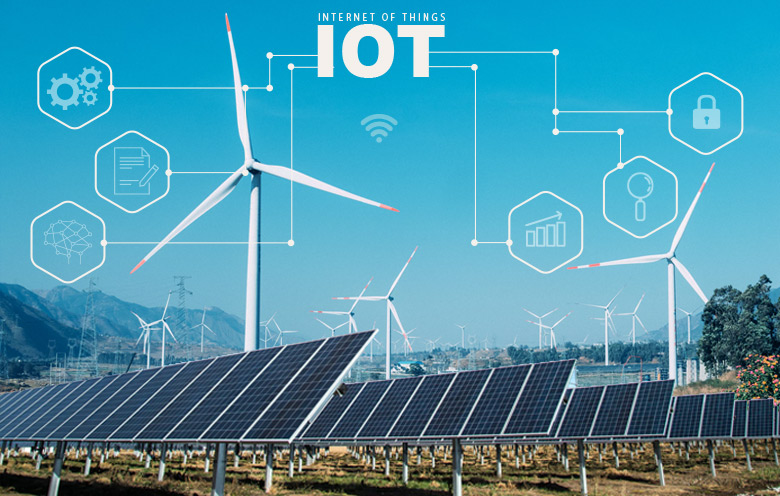What is IoT and How Does it Apply to Asset Management?
The Internet of Things (IoT) refers to a network of interconnected devices that communicate with each other through the internet. In the context of asset management, IoT allows equipment and machinery to be equipped with sensors that gather data in real-time. This data provides insights into the condition, usage, and performance of assets, enabling organizations to make smarter decisions and improve operational efficiency.
IoT in asset management creates a bridge between physical assets and digital systems. By embedding sensors in equipment, organizations can continuously monitor parameters such as temperature, vibration, pressure, and operational status. This real-time data is then transmitted to centralized platforms where it can be analyzed and turned into actionable insights. The result is a more connected, transparent, and efficient approach to managing assets throughout their lifecycle.
Key Benefits of IoT in Asset Management
- Real-Time Monitoring: IoT enables continuous, real-time monitoring of your assets. By collecting data on factors like temperature, vibration, or pressure, organizations can get a clear picture of the current state of their equipment. This allows for prompt intervention when something goes wrong, reducing downtime and preventing costly damage. Real-time monitoring provides immediate visibility into asset conditions, enabling quick responses to changing circumstances.
- Predictive Maintenance: IoT helps organizations transition from traditional maintenance schedules to predictive maintenance. By analyzing sensor data, potential issues can be detected early, allowing maintenance to be performed only when needed. This reduces the likelihood of unexpected failures and saves on maintenance costs. Predictive maintenance can reduce equipment downtime by up to 50% and extend machine life by 20-40%.
- Optimized Asset Utilization: IoT provides valuable insights into asset utilization. By understanding how often equipment is used and how it performs, organizations can optimize the deployment of their assets, ensure that resources are being used effectively, and reduce idle times. This leads to improved operational efficiency and better return on investment for capital assets.
- Informed Decision Making: The data collected from IoT devices helps organizations make informed decisions. Whether it involves deciding on equipment replacement, enhancing operational processes, or optimizing inventory levels, IoT-generated insights lead to better strategies and more efficient operations. Data-driven decision making reduces guesswork and enables more strategic planning for asset management.
How to Implement IoT in Asset Management
To effectively implement IoT in asset management, organizations should start by identifying the assets that would benefit the most from real-time monitoring. Next, IoT sensors can be installed on these assets to collect valuable data. It's also important to invest in a software platform capable of analyzing the data generated by these devices. Finally, training staff to interpret and act on these insights is crucial to getting the full benefits of IoT-driven asset management.
Here's a step-by-step approach to implementing IoT for asset management:
- Asset Assessment: Conduct a thorough assessment of your assets to identify which ones are most critical to your operations and would benefit most from IoT monitoring.
- Define Objectives: Clearly define what you want to achieve with IoT implementation, whether it's reducing downtime, improving maintenance efficiency, or optimizing asset utilization.
- Select Appropriate Sensors: Choose IoT sensors that can monitor the specific parameters relevant to your assets and objectives. This might include vibration sensors, temperature sensors, power consumption monitors, or GPS trackers.
- Implement Data Collection Infrastructure: Set up the necessary infrastructure to collect and transmit data from the sensors to your central system. This may involve gateways, networking equipment, and cloud connectivity.
- Deploy Analytics Platform: Implement a robust analytics platform capable of processing, analyzing, and visualizing the data collected from IoT sensors. Look for platforms with machine learning capabilities for predictive insights.
- Integrate with Existing Systems: Ensure that your IoT solution integrates seamlessly with existing enterprise systems such as ERP, CMMS, or EAM systems to maximize value.
- Train Staff: Provide comprehensive training to maintenance teams, operators, and managers on how to use the IoT system and interpret the data it provides.
- Monitor and Refine: Continuously monitor the performance of your IoT implementation and refine your approach based on results and feedback.
Industry Examples of IoT in Asset Management
IoT is being used in numerous industries to revolutionize asset management:
- Manufacturing: IoT sensors on production machinery can monitor wear and tear, helping manufacturers plan maintenance during off-peak times to avoid disruptions. For example, a leading automotive manufacturer implemented IoT sensors on assembly line robots, reducing unplanned downtime by 35% and extending equipment life by 20%.
- Healthcare: IoT technology is used to monitor critical medical equipment, ensuring it is functioning properly and alerting technicians before breakdowns occur. A major hospital network implemented IoT monitoring for their MRI machines and ventilators, reducing equipment failures by 40% and saving millions in maintenance costs and extended equipment lifecycles.
- Energy Sector: IoT devices in the energy sector help track the performance of turbines, generators, and other key infrastructure, ensuring optimal energy production and minimizing downtime. Wind farm operators using IoT sensors on turbines have reported a 25% reduction in maintenance costs and a 15% increase in energy output through optimized operations.
- Transportation and Logistics: IoT sensors enable real-time tracking of vehicles and cargo, optimizing routes, monitoring fuel consumption, and predicting maintenance needs. Fleet management companies have reduced fuel costs by up to 15% and maintenance expenses by 20% through IoT-enabled predictive maintenance.
- Building Management: Smart buildings use IoT sensors to monitor and control HVAC systems, lighting, security, and other infrastructure, leading to energy savings and improved comfort. Commercial property managers have reported up to 30% reduction in energy costs and significant improvements in tenant satisfaction after implementing IoT-based building management systems.
Conclusion
Leveraging IoT technology for smarter asset management is transforming how industries monitor, maintain, and optimize their assets. From real-time monitoring to predictive maintenance, IoT provides the tools necessary to extend asset lifespans, improve efficiency, and ultimately reduce costs. As IoT continues to evolve, its role in asset management will only become more significant, helping organizations make data-driven decisions and achieve greater operational success.
The future of asset management lies in connected, intelligent systems that can provide unprecedented insights into asset performance and health. Organizations that embrace IoT technology now will be well-positioned to gain competitive advantages, reduce operational costs, and maximize the value of their assets. As sensors become more sophisticated, analytics more powerful, and connectivity more ubiquitous, we can expect even greater transformations in how assets are managed across all industries.



